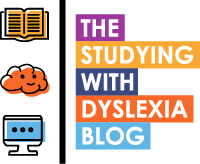During Neurodiversity Celebration Week, it's essential to highlight Autism Spectrum Disorder (ASD), a neurological developmental condition that affects a person in a variety of ways. Autism impacts areas such as social interaction, communication, empathy, sensory needs, and anxiety (particularly around change). It can also influence sleep, emotions, and many other aspects of daily life.
At Studying with Dyslexia, we believe in fostering a supportive environment for all neurodivergent individuals, including those with autism. Understanding the unique traits of autism can help educators provide tailored strategies that allow students to thrive in educational settings.
How Autism Affects Individuals
Autism is a spectrum condition, meaning that it affects people in different ways, and no two individuals with autism are the same. Here are some key areas where autism can impact individuals:
Social Interaction: Autistic individuals may find social interactions confusing, overwhelming, or difficult to navigate. They may struggle with understanding social cues, body language, and forming connections with others.
Communication: Autism can impact both verbal and non-verbal communication. Some individuals may have difficulty expressing themselves clearly or understanding language in the same way as neurotypical individuals.
Empathy: While many autistic individuals experience empathy, they may express it differently, making it challenging for others to recognise. They may also struggle to understand the emotional responses of others in social situations.
Sensory Needs: Many autistic students experience hyper- or hypo-sensitivity to sensory stimuli, such as lights, sounds, textures, or smells. Sensory overload can lead to stress and discomfort, affecting concentration and emotional regulation.
Anxiety: Change, unpredictability, and new experiences can be highly anxiety-provoking for autistic individuals. Transition anxiety is particularly common when shifting between tasks or environments.
Effective Support Strategies for Autistic Students
Supporting students with autism requires a personalised approach. Since autism affects each individual differently, it’s important to treat each student as an individual and provide the specific support they need. Here are some strategies to consider:
Allow Processing Time: When giving verbal instructions, it’s important to allow processing time. Autistic students may need more time—sometimes up to 10 seconds or more—to fully process and understand what’s being asked of them. Be patient and avoid rushing them.
Prepare for Transitions: Transitioning between activities or environments can be difficult and anxiety-provoking for autistic students. To ease this, use visual timetables and provide verbal reminders before changes occur. This allows the student to prepare for upcoming transitions and reduces anxiety.
Create a Quiet Space: Many autistic students need a quiet, calm space where they can escape sensory or social overload. Providing a designated area for students to retreat to when feeling overwhelmed can help them manage their emotions and recharge.
Sensory Regulation: Sensory overload can drain a student’s emotional and mental resources, affecting their ability to focus and regulate their behaviour. Addressing sensory needs by providing sensory-friendly environments or tools (such as noise-cancelling headphones or fidget toys) can help students self-regulate and concentrate better.
Social Stories and Comic Strip Conversations: Social situations can be confusing or stressful for autistic students. Tools like social stories (short narratives that explain social situations) and comic strip conversations (visual aids that map out social interactions) can help students understand and navigate social norms. Rehearsing common social interactions can also provide comfort and increase their confidence in these situations.
Understanding the Individual
As with all neurodivergent conditions, no two students with autism are the same, and their needs and challenges will vary. By recognising the impact of sensory sensitivities, anxiety, and social challenges, we can better support autistic students in a way that addresses their unique needs. The key is to create an understanding, flexible, and supportive environment that promotes learning and emotional well-being.
NB: We understand that autistic individuals are not ‘disordered’, however it is the language officially used, we endeavour as neurodivergent individuals to use neuro-affirming, person first language where possible.
Thank you for reading! If you found this article helpful and want to stay updated with the latest insights on dyslexia and neurodiversity, please sign up for our newsletter. To support our work and help us keep the blog running, consider supporting the blog by clicking here.
